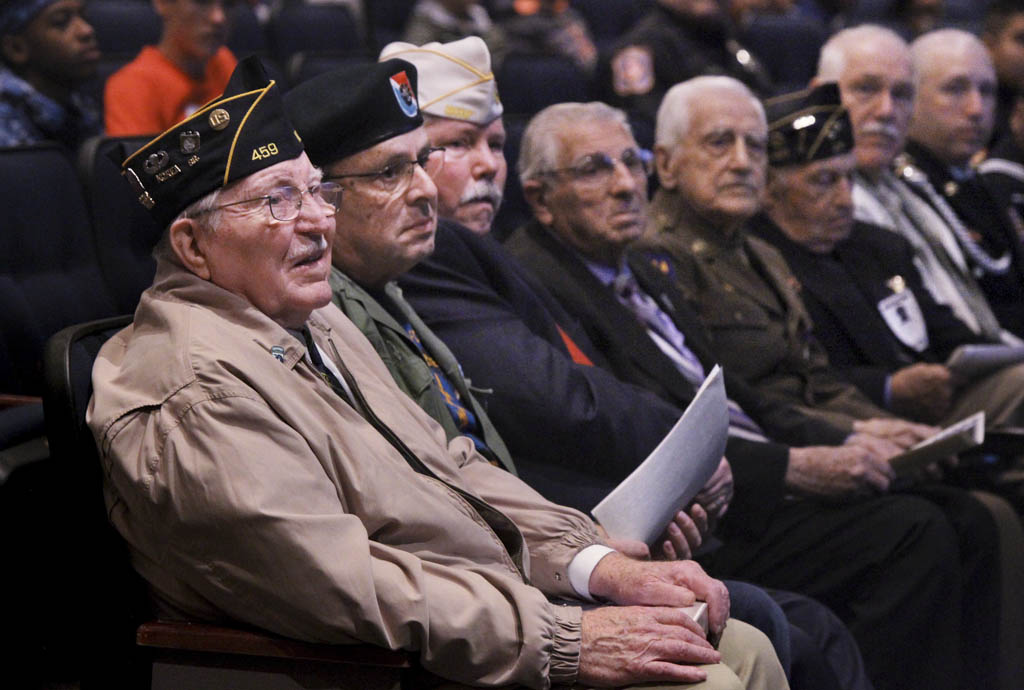One hundred years ago on Nov. 11, 1918, at 11 a.m., the guns went silent. “The War to End All Wars” came to an end in a railroad car in France.
After successful intervention by American forces, the Central Powers yielded and the new League of Nations would redraw the map of Europe, the Middle East and North Africa. The German Empire, the Austria-Hungary Empire and the Ottoman Empire would be redesigned into a new collection of nations.
This new configuration may have solved some problems; however, it ultimately created others. In trying to make political boundaries around people of different ethnic, religious and cultural backgrounds, the League of Nations actually set the stage for future conflicts.
Twenty-one years later, Adolph Hitler started up his Nazi war machine to get back the territory Germany lost at the end of World War I.
I was born in the period between the end of World War I and the beginning of World War II. As a little boy, I remember playing with toy soldiers. My friends and I had lead soldiers that were painted to resemble American World War I soldiers. They even had tin helmets that were attached to the soldier’s head by a pin inserted during the casting process. We had little toy trucks to carry them around. We dug little trenches in the yard and we had toy spring loaded artillery that shot dirt.
In typical little boy fashion, we had hand held bi-wing aircraft that dropped pebble bombs. In school we learned to sing songs like “It’s a Long Way to Tipperary,” Tipperary is a long way from where?
My uncle, my grandfather and a lot of people my parents knew were in World War I. As kids we know little and understood less about war. In our little battleground in the yard, some of our soldiers got knocked over at times. But, none were ever wounded or killed.
Our insulation from the facts ended on Dec. 7, 1941. America was attacked and we were at war. A short time later our little lead soldiers were called to duty. We melted them into lead ingots, which became the raw material for bullets and all that remained were the tin helmets.
This Nov. 11 is the 100th anniversary of the Armistice ending World War 1.
Veterans Day is actually a dual holiday since it also incorporates Armistice Day. North Brunswick Township will be commemorating both this year. On Nov. 9, North Brunswick veterans and their wives are invited to attend a breakfast at the Senior Center beginning at 9 a.m. A ceremony designating Linwood Place, near American Legion Post 459, as World War I Way will take place at 10:15 a.m.
Afterward, escorted tours of the World War I veterans’ graves and Joyce Kilmer Monument in Elmwood Cemetery will take place. North Brunswick Township High School will hold a Veterans Day program in the school auditorium at 9:30 a.m. Nov. 12.
On Sunday, Nov. 11, at 11 a.m., a ceremony will take place at the monument by Van Liew Cemetery. This ceremony will be part of a nationwide commemoration where bells will be rung across the country at 11 a.m.
World War I will be the subject of a panel discussion in front of the monument in Veterans Park that will be videotaped for broadcast on Channel 15.
During the month of November, World War I artifacts and art will be on display in the lobby of the North Brunswick Municipal Building.
Our national day of Thanksgiving will be on Thursday, Nov. 22. When we consider Armistice Day, Veterans Day and Pilgrims landing on a rock bound coast, we sure have a lot to be thankful for. Please join us – if not in person, then in spirit.
Richard Pender is the senior vice commander of American Legion Post 459 in North Brunswick. He occasionally writes a historical column for Newspaper Media Group. He can be reached at [email protected].

